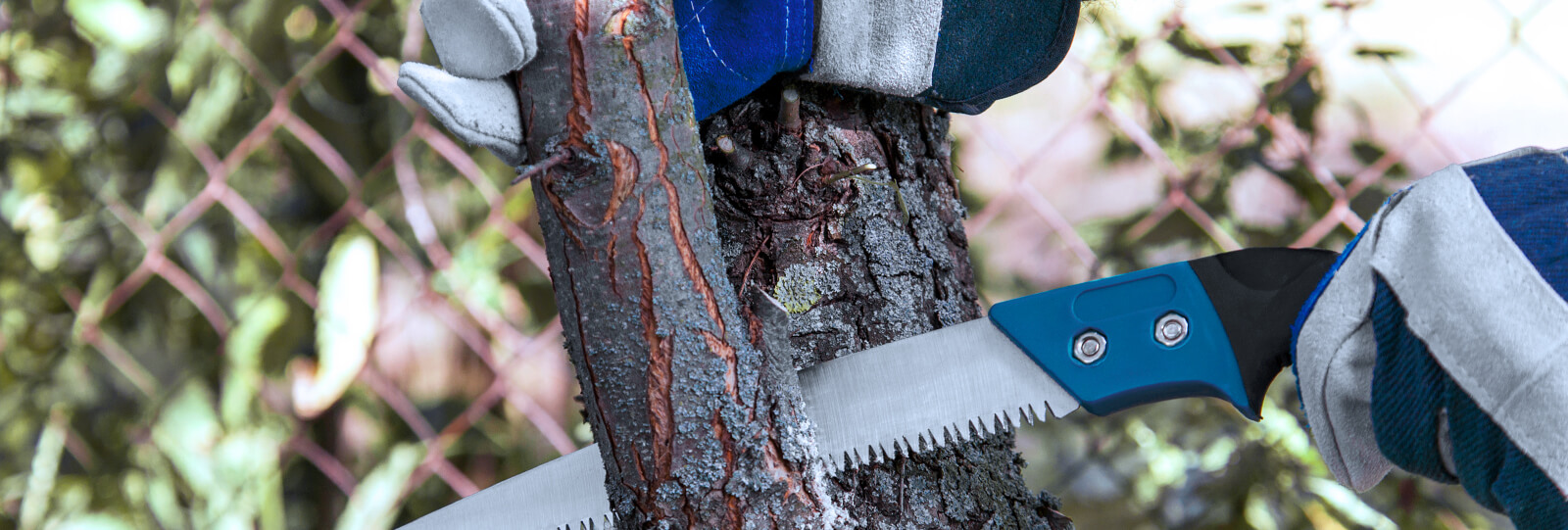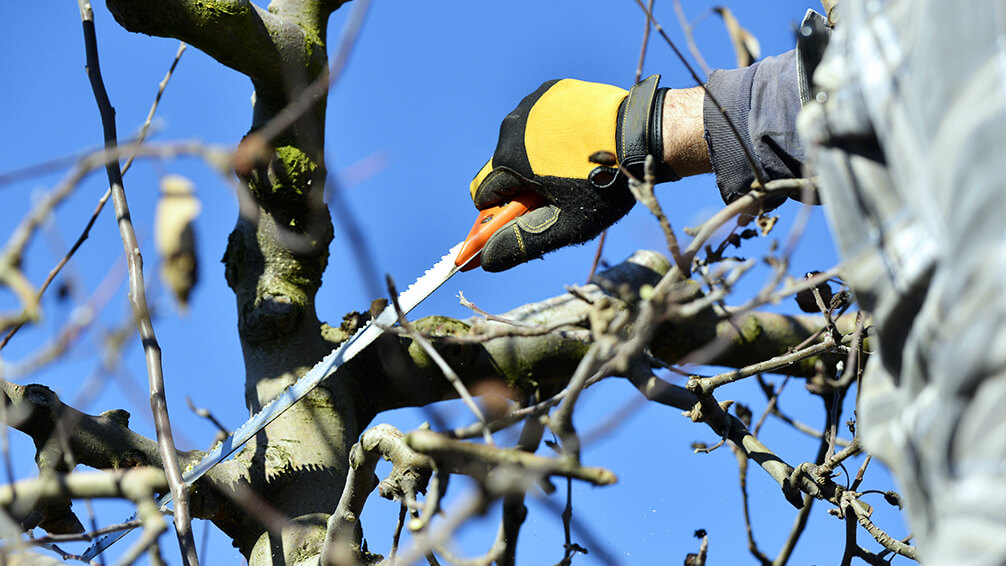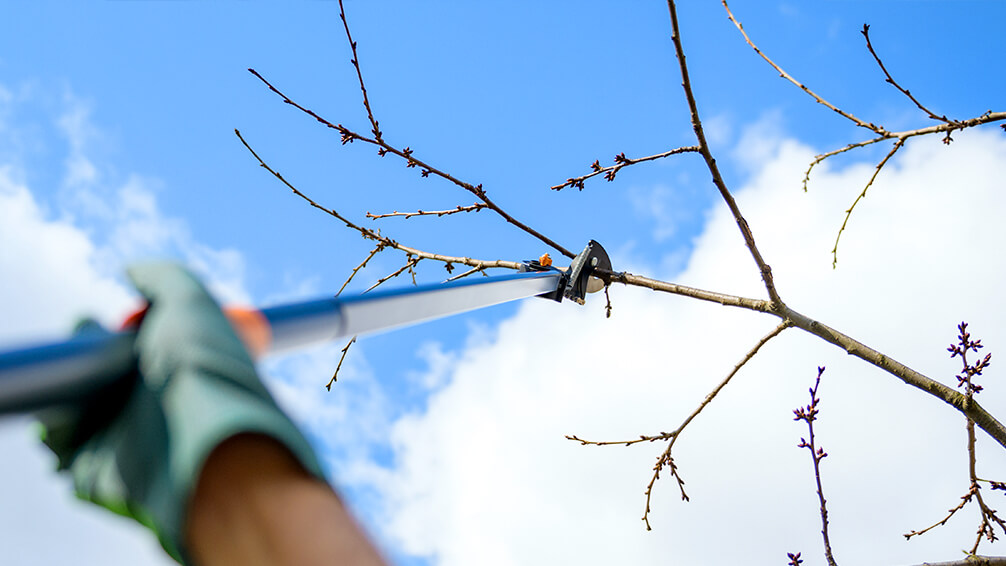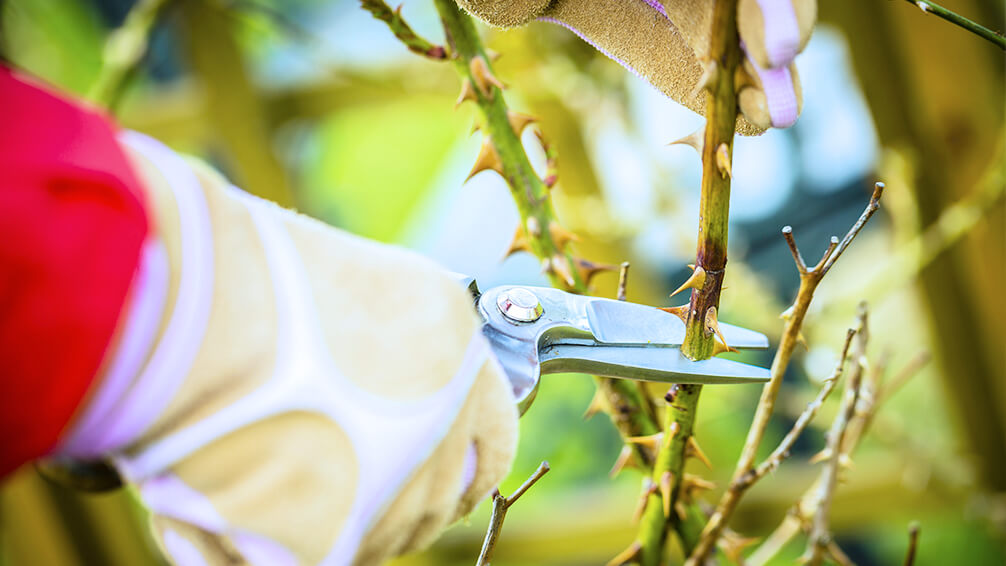
Everything You Should Prune This February in Houston
Are you unsure of what to prune in February in Houston? Winter is wrapping up, and now is the time for many eager gardeners to begin starting seeds and prepping their beds for spring, but pruning is a bit trickier. The thing is, some plants absolutely should be pruned in late winter, whereas other plants should never ever be pruned in late winter, or else they won’t produce any flowers all year!
How do you tell the difference between a plant that should be pruned now or later in the year? We put together this quick cheat-sheet of what to prune in February, so your plants can get the fresh trim they need, exactly when they need it.

What Can I Prune in February?
Before we get into the list of what to prune in February, we need to make one thing super clear: don’t prune spring-flowering shrubs or trees yet! Spring-blooming landscape plants, like lilacs, will bloom on old wood. This means they develop their flower buds later in the year after their spring flowers have long gone. By that logic, the best time to prune spring-flowering trees and shrubs is in the summer once their blooms fade.
Now that we’ve got that out of the way, here are the plants that you definitely can prune right now:
Summer-Flowering Shrubs
Flowering shrubs that bloom after June can be safely pruned right now, as they haven’t developed their flower buds yet. Some popular summer flowering shrubs include oleander, hydrangea paniculata, reblooming hydrangeas like “Endless Summer,” spirea, summersweet, and rose of Sharon.
When you prune your shrubs, don’t just dive right in and give it a wild haircut. You want to be strategic about where you make your cuts, so you end up with fuller growth and maximum blooms in summer. Start by removing any dead or damaged branches, then thin out the growth by making cuts at a 45° angle, ¼ inch above the nodes (the little bumps where new branches will emerge).
If your tree is very big, call in some professionals to prune it for you! Don’t run the risk of trying to balance on a tall ladder while reaching above your head with sharp, heavy tools.

Fruit Trees
Most fruit trees can be pruned in February to help maintain their shape, remove damaged parts, and eliminate crossing-over branches. Crossed branches can rub together, and anyone who has experienced the horrors of thigh chafe can picture the sort of damage that can inflict! On trees, friction injuries from crossing branches can make the tree more vulnerable to harmful pathogens, so you’ll want to pick the weaker branch and snip it.
If your fruit tree isn’t too large, you should be able to do it yourself, but definitely invest in a good pair of pole pruners for those hard-to-reach areas. Use pruners with bypass blades that slice completely through instead of blades that meet at a point, which can crush and injure the branches. If your tree is very big, call in some professionals to prune it for you! Don’t run the risk of trying to balance on a tall ladder while reaching above your head with sharp, heavy tools.
Crape Myrtles
These stunning flowering trees are so popular in Houston, but far too many gardeners are guilty of “crape murder,” AKA cutting back your crape myrtles down to sad little stumps. Don’t believe the rumors: hacking your crape myrtle to bits won’t result in better growth! While it will bounce back with an impressive amount of regrowth, it will be weak and spindly. Find the happy medium, and don’t go overboard!

Roses
Lots of customers ask us, “Is it too late to prune roses in February?” So let’s set the record straight: you can most certainly prune roses in February here in Houston! Just remember to wear proper protective gear—heavy-duty gloves and thick, long sleeves are essential when you’re cutting back these thorn-covered plants. For shrub roses, try to thin out the middle and make cuts that encourage outward growth to train the shrub into a vase-like shape.
Deciduous Trees and Shrubs
If you’ve got some deciduous landscape plants that don’t flower, you can prune them at the end of winter. Non-flowering shrubs like boxwood can be trimmed into a neat, well-manicured hedge if you like the look of perfectly-symmetrical border plants. Many large deciduous trees are too big to prune on your own, but if you’ve got a smaller tree or a dwarf variety that’s showing some signs of damage or disease, or if it has a lot of cross branches, you can get in there with the pole pruners.

Grapevines
Grapevines won’t develop properly and their new growth will be stunted if last year’s growth isn’t cut back. Prune along the main canes, removing all 1-year-old wood, and leave a few bud spurs on each one, about 4–6 inches apart. Depending on your grape variety, you should leave somewhere between 20–80 bud spurs per plant. Once it’s all nicely trimmed, you’ll have much more manageable growth and tastier fruit to enjoy!
Bougainvillea
We love these showstopping tropical stunners for their lush, neon magenta bracts that creep up walls like a beautiful floral tapestry. If there are any super long, trailing stems on your plant, you can cut them back 20–30 inches. Young plants should be pruned around the base to encourage thicker, fuller growth in the long term. Nipping the tops off of branches just above the bud nodes will encourage the plant to form new branches.
If you’re lacking landscape plants to prune, now is an excellent time to plant some new ones! We are happy to provide planting services for those who need it, but if you’d like to take on the challenge yourself, we’ve got the best pruning supplies in Houston, plus everything else you’ll need to get started. Visit Plants for All Seasons to see all the lovely shrubs and trees ready to go home with you today!


Comment (1)
The technique of pruning always requires experience and knowledge, and I think you have some great insights
Comments are closed.